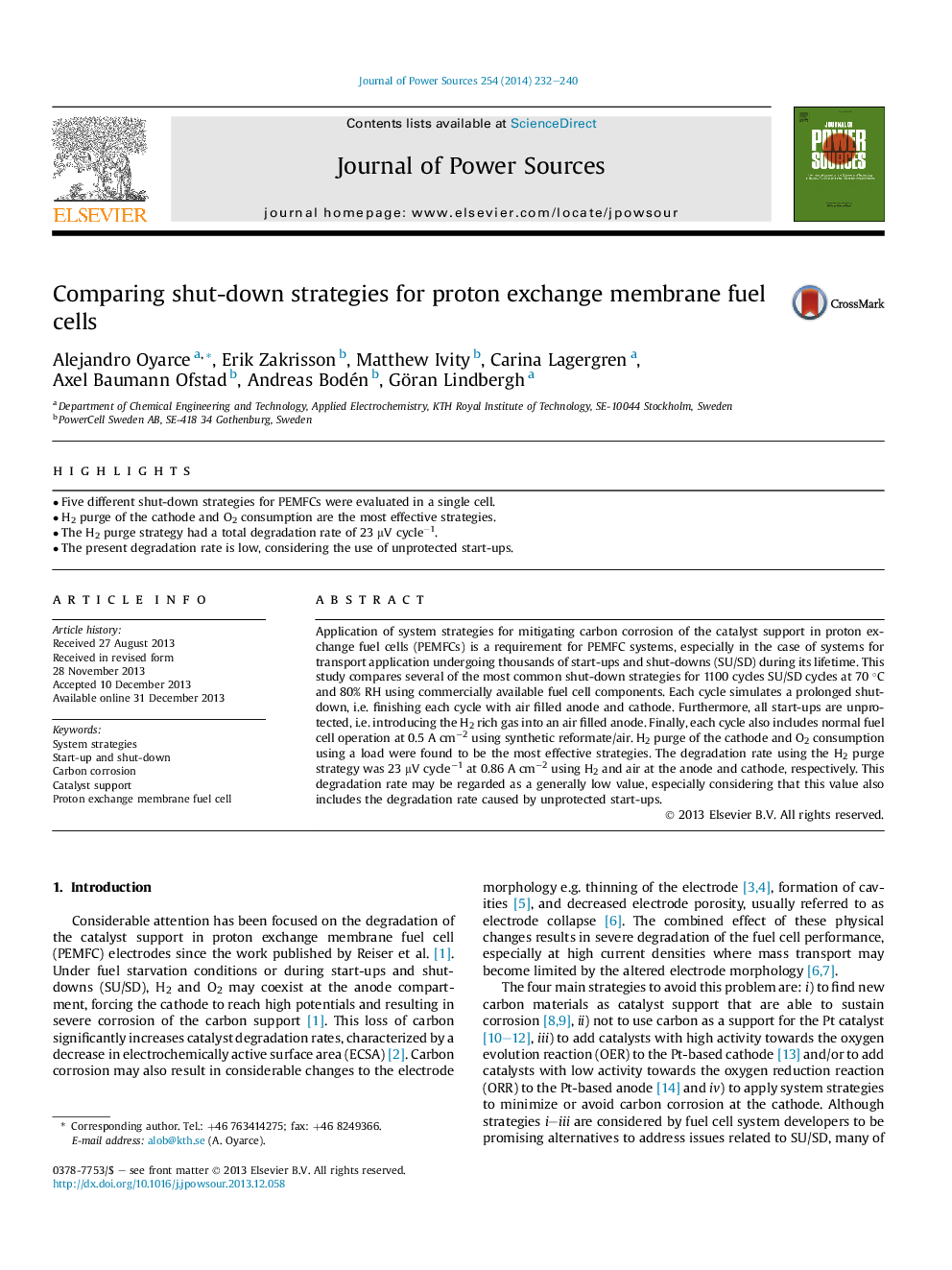| Article ID | Journal | Published Year | Pages | File Type |
|---|---|---|---|---|
| 7737356 | Journal of Power Sources | 2014 | 9 Pages |
Abstract
Application of system strategies for mitigating carbon corrosion of the catalyst support in proton exchange fuel cells (PEMFCs) is a requirement for PEMFC systems, especially in the case of systems for transport application undergoing thousands of start-ups and shut-downs (SU/SD) during its lifetime. This study compares several of the most common shut-down strategies for 1100 cycles SU/SD cycles at 70 °C and 80% RH using commercially available fuel cell components. Each cycle simulates a prolonged shut-down, i.e. finishing each cycle with air filled anode and cathode. Furthermore, all start-ups are unprotected, i.e. introducing the H2 rich gas into an air filled anode. Finally, each cycle also includes normal fuel cell operation at 0.5 A cmâ2 using synthetic reformate/air. H2 purge of the cathode and O2 consumption using a load were found to be the most effective strategies. The degradation rate using the H2 purge strategy was 23 μV cycleâ1 at 0.86 A cmâ2 using H2 and air at the anode and cathode, respectively. This degradation rate may be regarded as a generally low value, especially considering that this value also includes the degradation rate caused by unprotected start-ups.
Related Topics
Physical Sciences and Engineering
Chemistry
Electrochemistry
Authors
Alejandro Oyarce, Erik Zakrisson, Matthew Ivity, Carina Lagergren, Axel Baumann Ofstad, Andreas Bodén, Göran Lindbergh,
